Top 5 Books for Understanding Boston
Top 5 Books for Understanding Boston
BY RUDY MITCHELL, Senior Researcher, Applied Research and Consulting
No one book or even a handful of books can fully cover the many facets of the city of Boston over its nearly 400 year history. Many books cover highly specific topics, present photographic highlights, or serve an academic readership. However, the following five books give distinctive insights, diverse perspectives, and general overviews. I recommend these five because they provide a variety of viewpoints, are general in nature, and can best serve most readers in understanding Boston.
A PEOPLE’S HISTORY OF THE NEW BOSTON
BY JIM VRABEL
Although many books about Boston focus on the city’s mayors, urban planners, and prominent leaders, Vrabel focuses on community activists, the poor, and working class men and women whose protests and community organizing played an unsung role in shaping the “New Boston” over the last fifty years. This important book, based on many interviews and extensive research, covers a range of issues from housing and urban renewal to education and jobs, as well as protests against a proposed Southwest Expressway and airport expansion.
COMMON GROUND: A TURBULENT DECADE IN THE LIVES OF THREE AMERICAN FAMILIES
BY J. ANTHONY LUKAS
The Pulitzer Prize winning Common Ground probes the roots of issues related to race, class, educational disparity, and income inequality which are still critical to understand and address. This brilliant work of historical nonfiction reads like an epic novel. In the foreground are three families: the black Twymons, the Irish McGoffs, and the Yankee Divers. The larger picture is not limited to Boston during the decade of court-ordered school integration through busing of students, although the book brings that era to life in intimate detail. Lukas paints a complex picture rich with details and explorations into the historical roots of the issues. Great works like this often draw on the details of one specific place and time to understand the larger, enduring concerns of American society and its cities.
THE HUB: BOSTON PAST AND PRESENT
BY THOMAS O’CONNOR
The Hub is the best general, one volume history of Boston. O’Connor draws on a long career of research and writing about Boston to distill his insights on Boston’s resistance and adaptations to political, social, religious, and economic changes over the centuries. While creatively adapting to major changes, the city and its neighborhoods have maintained their distinctive and historical qualities without becoming frozen in time. However, O’Connor defines the current challenge facing the city as retaining “its own distinctive identity as a city whose moral standards, civic virtues, and intellectual accomplishments once inspired a nation (xiii).”
BOSTON VOICES AND VISIONS
BY SHAUN O’CONNELL, ED.
The editor of this anthology of historical and literary excerpts about Boston has selected richly descriptive pieces as well as selections that consider the high purpose and vision set forth for the city. These selections convey the flavor and everyday life of the city over the centuries, but also interpret, critique and praise the ideas, attitudes, and ideals of Boston. The book includes a wide range of authors from John Winthrop (1630), to Oliver Wendell Holmes (1831), to W.E.B. DuBois (1960), and Patricia Powell (2004).
BOSTON: A TOPOGRAPHICAL HISTORY. 3RD EDITION.
BY WALTER MUIR WHITEHILL AND LAWRENCE KENNEDY
While the title of this classic work may suggest a narrow focus, Whitehill’s book is actually an excellent introduction to the general development of Boston. The changing face of the Boston landscape and its built environment are concisely covered and generously illustrated with many pictures and maps. Some newer books go into more depth on the filling of the Back Bay and the process of urban renewal, but this work is especially helpful in understanding the first three centuries of central Boston history. Although the book does not cover the social and religious aspects of Boston in any depth, it provides a remarkable amount of detail about the city’s buildings and physical development, all in a very readable style.
For more recommended reading on Boston and its history as well as resources for walking the city, here is a fuller list of resources.















EGC Executive Director Jeff Bass reflects on the greatest lesson from the recent meeting of the Greater Boston Interfaith Organization at the Boston Islamic Center, attended by Sen. Elizabeth Warren and Mayor Marty Walsh.